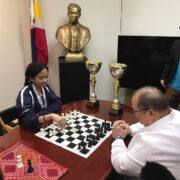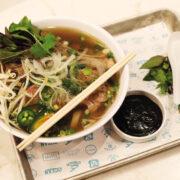ALLIANCES are supposed to create new and stronger organizations.
But history may show that sometimes, integrations may look good on paper but fall short of what is expected.
From Nov. 15 until 20, the Association of Southeast Asian Nations (ASEAN) gathered the region’s heads of states and dignitaries for the 21st Asean Summit and Related Summits in Phnom Penh, Cambodia.
The “ASEAN: One Community, One Destiny,” annual meeting of ASEAN leaders aimed to tackle economic and cultural developments in Southeast Asia.
Joining them for related meetings are President Barack Obama, South Korean President Lee Myung-bak, Chinese Premier Wen Jiabao and Japanese Prime Minister Yoshihiko Noda.
President Benigno Aquino joined nine other ASEAN heads of government to discuss issues from maritime security; to climate change and disaster risk reduction managemen; and migrant workers’ protection and welfare.
Aquino also presented the Philippines’ progress in contributing to regional efforts toward achieving the establishment of an ASEAN Economic Community (AEC) by 2015.
According to Cambodian Prime Minister Samdech Akka Moha Padei Techo Hun Sen, the 21st ASEAN Summit will promote the integration process and strengthen the bloc’s central role in the region’s evolving regional economic and social architecture.
Among the important issues discussed by the participating leaders were the ASEAN Human Rights Declaaration, the establishment of the ASEAN Regional Demining Center in Cambodia and launching of the ASEAN Institute for Peace and Reconciliation. The meetings also covered updates on the Implementation of the ASEAN Charter and Roadmap for the AEC.
By Dec. 31, 2015, ASEAN envisions an Economic Community with the following key characteristics: A single market and distribution base, a highly competitive economic region with equitable economic development, and a region fully integrated into the global economy.
Dubbed as ASEAN Economic Community (AEC), the economic bloc aims to make the region more dynamic and competitive, by making a single market and production base, governed by the principles of an open, outward-looking, inclusive and market-driven economy. With an estimated 600 million population, AEC will be formed on the region’s diverse norms and values. As an amalgamated economy, AEC will allow free flow of goods, services, investments, capital and labor.
In view of the fast-approaching target date, ASEAN 2015 may be ambitious. A single market and production base is about providing consumers in a larger market place, while offering an expanded space for production activities, regardless of existing national (administrative) boundaries within the region.
This simply means all countries will have to adhere to AEC’s agreements and protocols with no barriers. But because of ASEAN’s diversity, removal of such barriers may still face many hurdles, physically, economically, politically and culturally.
Such is the ASEAN’s failure to reach a common ground, on how to deal with the current Spratlys territorial dispute, involving four of its members (the Philippines, Vietnam, Malaysia and Brunei) plus China and Taiwan. The regional bloc is yet to reach a decision and come up with a joint statement to address the impasse.
Although the Philippines remains committed in complying with the AEC timetable, it still has to settle more important constraints. The country needs to focus more on its competitiveness and economic stability, and issues such as health and education.
ASEAN member nations must now concentrate on organizing themselves and implementing more regional commitments. Any delays on ratification will only create backlogs and alarming propositions. It is imperative that ASEAN leaders actively promote better understanding of the AEC and actions to achieve its goals.
While there is safety in numbers, this era of globalization has also looming threats for ASEAN, now more than ever when a country’s socio-economic growth hinges on the strength of its regional ties.
(AJPress)





